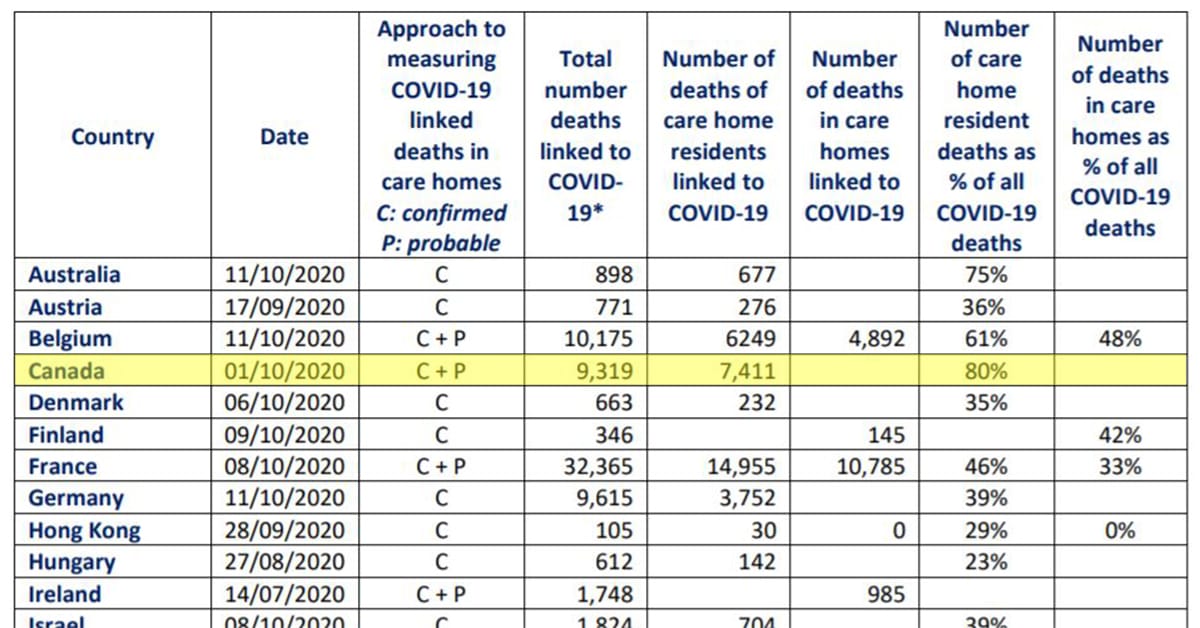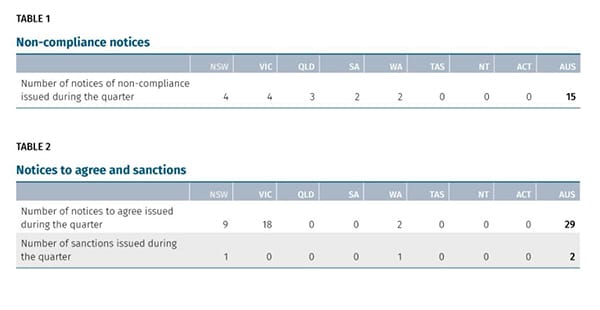Ontario’s COVID-19 Commission releases interim recommendations to prevent future aged care outbreaks – minimum of four hours care per resident per day and on-demand hospital transfers
Canada has consistently ranked as the worst country for COVID-19 deaths in aged care, with 80% of its total coronavirus deaths taking place in residential care according to the latest figures – now the Long-Term Care COVID-19 Commission set up in...

Canada has consistently ranked as the worst country for COVID-19 deaths in aged care, with 80% of its total coronavirus deaths taking place in residential care according to the latest figures – now the Long-Term Care COVID-19 Commission set up in Ontario, which had one of the highest death rates, has made its interim recommendations – and they are worth a look.
The COVID-19 Commission was announced on 29 July to investigate how and why COVID-19 spread in long-term care homes, what was done to prevent the spread, and the impact of key elements of the existing system on the spread with the aim of advising the Government on preventing the future spread of disease in long-term care homes.
The Commission’s final report is not due until April 30, 2021 – but its three Commissioners have released early recommendations designed to head off a second wave of the virus in aged care.
Headlined by words from residents and board members to describe their experiences during the first wave of COVID – including “devastating, emotional, lonely, depressed, muzzled, trapped, broken-spirited, and terror awakened” – the report notes that 55% of Ontario’s aged care homes had outbreaks which accounted for 75% of all COVID deaths in the province.
These outbreaks were linked to locations with high community transmission, but were also found to be related to insufficient leadership capacity; pre-existing and COVID-related staffing shortages; and a lack of strong infection prevention and control measures, including difficulty cohorting and isolating positive residents, usually because of the limitations of the physical environment.
As a result, the Commission’s preliminary recommendations focus on staffing, collaborative relationships, and infection prevention and control (IPAC).
In addition to the temporary wage increase being provided by the Government to personal support workers (PSW) until March 2021, the Commissioners recommend:
- Ensuring staff recruitment addresses the need for an appropriate staff mix to meet the increasing acuity and complex care needs of residents i.e. more nurses.
- More full-time positions to ensure staffing stability and retention and resident continuity of care.
- Identifying the investment i.e. how much money is needed to develop and implement a comprehensive human resources strategy that addresses the full range of staffing issues in the sector.
- A minimum daily average of four hours of direct care per resident. “The government needs to increase permanent funding for more nurses and support staff, to enable homes to increase their staff to resident ratio, and provide more hours of care, based on residents’ needs,” the Commissioners state.
- Ensure that families and caregivers have ongoing, safe and managed access to long-term care residents.
The Commissioners also underline the importance of strong integration between healthcare and aged care, saying this had helped some homes bring outbreaks back under control.
They recommended that:
- In the short term, where there are homes that are likely to have difficulties (whether based on past experience, high infection rates in the surrounding communities or other data), a collaboration model should be mandated immediately to establish relationships between homes, local hospitals and public health units.
- The long-term care ministry work with the Ministry of Health to formalise these relationships proactively. “There is no need to wait until an outbreak has occurred before a local hospital assists or is compelled to assist a LTC home,” they state. “Clearly defined supports and surge capacity for each LTC home must be in place and quickly mobilized when an emergency situation arises.”
Improvement were also recommended for infection prevention and control (IPAC), including:
- Ensuring every LTC home has a dedicated IPAC lead who can safeguard compliance with proper protocols; support and provide basic training for all staff, and access the local IPAC centre of expertise, as required.
- Enhancing LTC ministry resources and capacity to provide compliance support immediately. In the short term, inspection staff from the LTC ministry and others who can be trained, as well as from the local Public Health Unit, should be sent into homes to conduct inspections to ensure homes are properly implementing proactive IPAC measures, and are responding effectively to their assessment results.
- Providing the highest priority access to testing and quick turn-around of results for residents and staff.
- Giving COVID positive residents the option to transfer to alternate settings to avoid further transmission of the virus and help them recover. “Given that many LTC homes cannot effectively cohort and isolate because of physical infrastructure limitations, each home should work with its hospital, public health partners and others to put plans in place to quickly decant residents to other facilities, if it is appropriate and safe to do so. The plan should identify these facilities in advance.”
The recommendations share some similarities with those made in the Royal Commission into Aged Care’s special COVID report such as increased infection control and visitation – but it is interesting to note that neither hospital transfers or increased resident hours made the cut here.
We will keep you updated on which recommendations the Ontario Government chooses to take up.





